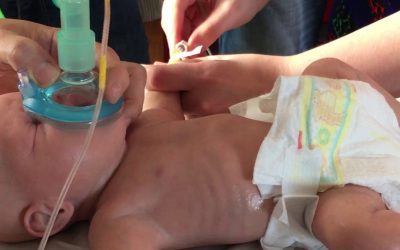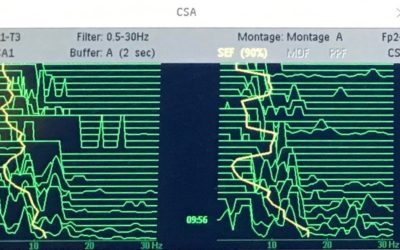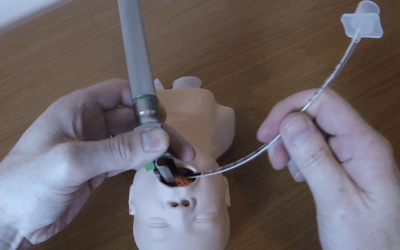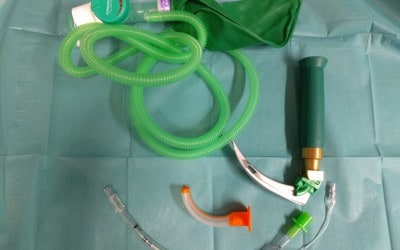Paediatric Critical Care Pearls – Part 6
This episode covers ‘Paediatric Critical Care Pearls’ 51 – 60. This is the 6th episode of the multipart series.
![]()
Febrile Infants
Dr Tom Waterfield provides advice on how to assess febrile infants.
![]()
What I want from an impromptu airway assistant in a cardiac arrest
This episode provides advice on how to assist with a paediatric intubation in a cardiac arrest aimed at those who wouldn’t normally perform this role.
![]()
Recognition of the Sick Child
Dr Tom Waterfield provides advice on how to spot the sick child
![]()
Paediatric Critical Care Pearls – Part 5
This episode covers ‘Paediatric Critical Care Pearls’ 41 – 50. This is the 5th episode of the multipart series.
![]()
Leadership in a Paediatric Emergency
This podcast provides a practical guide to effective leadership during a Paediatric Emergency. It covers key pearls on what to do and importantly provides advice on how to avoid the common pitfalls.
![]()
Paediatric Central Venous Line Insertion
This step-by-step guide to the procedure of central venous line insertion in children is primarily aimed at those new to the procedure, however clinicians familiar with the procedure in adults will still find some key pearls on how to modify their standard technique to achieve a high success rate in small infants.
![]()
Paediatric Critical Care Pearls – Part 4
This episode covers ‘Paediatric Critical Care Pearls’ 31 – 40. This is the fourth episode of the multipart series.
![]()
Intubation in Special Circumstances
What you need to know about how to modify the standard intubation technique as well as key learning points to remember when intubating children in special circumstances.
![]()
Compressed Spectral Array (CSA)
Step by step guide to using Compressed Spectral Array (CSA) in Intensive Care.
![]()
Direct Laryngoscopy
A step by step approach of how to succeed with direct laryngoscopy in children.
![]()
Intubation Pharmacology
What you need to know about the medications used for intubation of the critically ill child (induction agents, muscle relaxants, rescue medications and post intubation drugs).
![]()
Setting up the Ventilator
This episode provides an introduction to mechanical ventilation of the critically ill child and covers the basics of setting up the ventilator.
![]()
Paediatric Critical Care Pearls – Part 3
This episode covers ‘Paediatric Critical Care Pearls’ 21 – 30. This is the third episode of the multipart series.
![]()
Preparing to intubate the critically ill child
This episode covers the steps required when preparing to intubate a critically ill child and introduces the Paediatric Emergencies Pre-intubation Checklist.
![]()
Paediatric Critical Care Pearls – Part 2
This episode covers ‘Paediatric Critical Care Pearls’ 11 – 20. This is the second episode of the multipart series.
![]()
Paediatric Critical Care Pearls – Part 1
Paediatric Critical Care Pearls are key points that should be remembered when treating the critical ill child, each summarised into a sentence.
![]()
Peripheral Vasoactive Drugs in Kids
This article provides advice on how to use ‘Push Dose Adrenaline’ and ‘Peripheral Adrenaline Infusions’ in critically ill children.
![]()
Advanced Acid-Base Interpretation
In this episode the quantitative approach to acid-base interpretation is explained with examples of how to perform the calculations at the bedside.
![]()
Collapsed Neonate
Like any sick child the initial management of the ‘Collapsed Neonate’ involves an ABCDE approach. While there are many possible causes, four major diagnoses must be considered…
![]()
Should cuffed endotracheal tubes be used routinely in critically ill children?
Over the last few years cuffed endotracheal tubes are being used more frequently in critically ill children. This episode looks at the possible reasons for this and reviews the evidence of whether this practise is safe…
![]()
Bronchiolitis
Bronchiolitis is a viral infection of the lower airways, most often in infants but can affect children up to two years of age. It is commonly caused by respiratory syncytial virus (RSV), although it can be caused by numerous other viruses and it has a peak incidence in the autumn/winter…
![]()
Raised Intracranial Pressure
Airway opening manoeuvres (avoid head-tilt and chin-lift in trauma, use jaw thrust) as required with high flow oxygen (10-15 litre/minute via face-mask with reservoir bag) and suction airway as needed. Immobilise cervical spine in trauma patient…
![]()
Sepsis
Urgent semi-elective intubation and ventilation should be undertaken if there is ongoing signs of shock unresponsive to 40 ml/kg of fluid resuscitation or if there is airway obstruction/loss of protective airway reflexes at any stage (cardiovascular resuscitation should occur before induction of anaesthesia)…
![]()
Status Epilepticus
Airway opening manoeuvres with high flow oxygen (10-15 litre/minute via face-mask with reservoir bag) and suction secretions as needed. Consider nasopharyngeal airway if difficultly maintaining airway (insertion of oropharyngeal airway normally not possible due to clenched teeth)…
![]()
Acute Asthma
Intubate if there are life threatening features that are refractory to standard treatment i.e. silent chest, oxygen saturations <92%, cyanosis, poor respiratory effort, hypotension, altered consciousness or exhaustion...
![]()
![]()





















